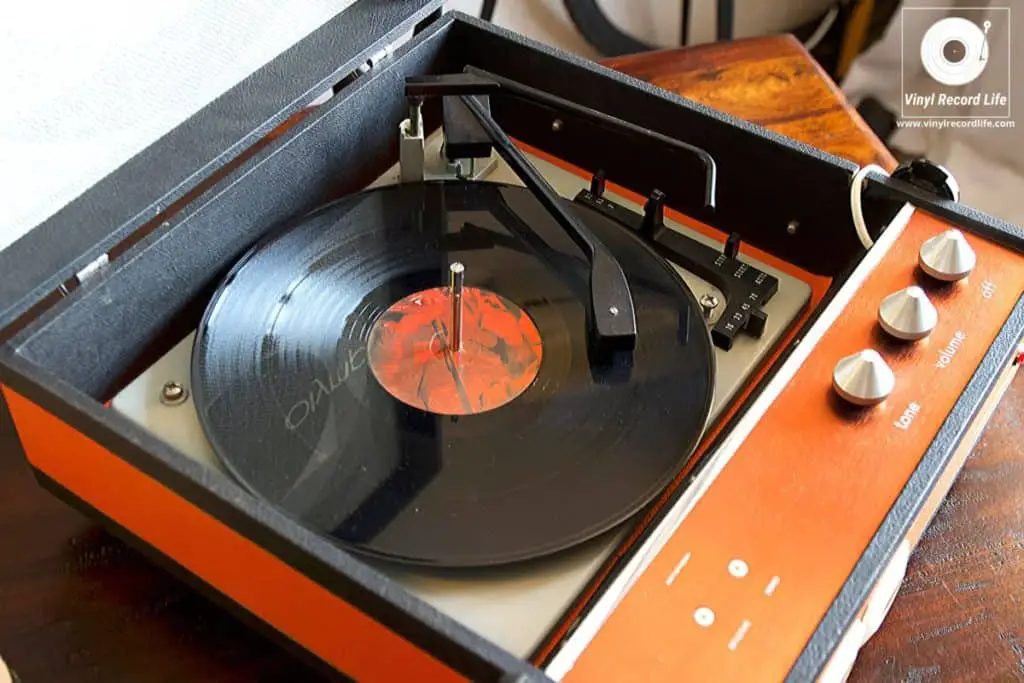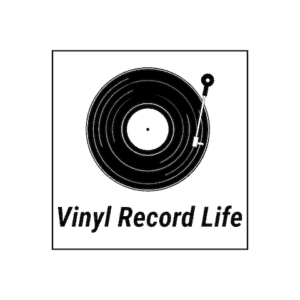
A vinyl record can last for many decades when cared for properly, but how many times could you reasonably expect to be able to play the same record before it’s no longer usable? It’s a question I’ve asked myself more than once, so I decided to find out.
A well-cared for record can be played more than 100 times, with only minor audible sound degradation. If carefully maintained the same disc could be played many hundreds of times in its lifetime. A record played on poorly set-up equipment can be destroyed in just one spin.
There are many things that can determine the number of plays you can get out of a record. Your equipment tuning and optimization, the cleaning routine you have for your records, the way you store them, the previous wear and the existing condition of the disc are all important influencing factors.
The Number of Plays You Can Expect to Get From a Vinyl Record In Its Lifetime
An experiment by Swiss scientists F.A. Loescher and F.M. Hirsch in the mid-1970s, as part of their development of a revolutionary new cleaning system for vinyl records, proved that the maximum number of times a disc can be played can reach the thousands in some circumstances.
They set up a controlled environment in which a record player’s stylus was cleaned after every 20 plays, and the dust cover of the record player was in use every time the disc was spinning.
The record itself was washed after 500, 1000 and 2000 plays to eliminate any dust that was collected during the experiment.
In a comparison test … 1200 [plays were achieved] for the conventional dry technique before any audible sound deterioration could be detected.
Harry Maynard, Popular Science (June 1977)
Let’s be honest, we’re not all going to be able (nor want!) to recreate the controlled environment of Loescher & Hirsch’s test when caring for and playing our precious vinyl collection! Their experiment did however prove that a new record can be played over 1000 times without such a level of decline in sound quality that would detract from the pleasure of the listening experience.
With a more realistic cleaning routine for your records and an attention to detail with the set-up of your turntable, you should be able to enjoy at least 100 spins without noticing any level of degradation in sound.
Some specialist record preservation products – such as LAST – claim that a new record which has been kept clean, stored caringly and treated with its Record Preservative “can be played a minimum of 200 times without discernible wear”.
A link to LAST’s Record Preservative on Amazon can be found here (link opens in Amazon).
These are good examples of the number of times a record can be played without either audible sound deterioration or significant notable wear, but when cared for in an exceptional manner.
What about if you are taking care of your record collection in a sensible way, but not going to such extremes as those mentioned above?
It is wholly conceivable that you could enjoy hundreds of plays of your vinyl record and only notice a very marginal drop-off in audio quality if you handle your records with care, if they are in excellent (or brand new) condition to begin with, and if you do clean your records on a regular basis before playing them.
How the Set-up of Your Turntable Affects the Number of Times a Vinyl Can Be Played
The set-up of your turntable is critical to how long you can expect to be able to enjoy the best possible sound from your records and, by extension, the total number of plays you’ll get from them in their lifetime.
One of the most important aspects is the quality and condition of the stylus, or needle. A clean, unworn stylus will help to preserve the quality of the record whereas a worn stylus can destroy a record in just one play.
The tracking weight of the stylus is also a fundamental factor, and should be adjusted correctly on turntables that have an adjustable tonearm. If the pressure is too heavy, the record will damage quickly. If it is too light then the stylus may jump when there is a lot of vibration due to a loud section of the track you’re listening to, and the damage is caused when the stylus resettles in the groove of the record.
Another very important area to pay close attention to is the levelling of your turntable. By checking that the actual platter of the turntable (the part on which the record sits when spinning) is completely level and stable, you are ensuring that along with the correct set-up of the stylus the contact with the record is optimized.
Set-up pointers to consider:
- A stable, vibration-free and level surface for your turntable.
- Double check the levelling of your turntable’s platter.
- Ensure the tonearm is properly calibrated and that the stylus pressure is just right (according to manufacturer guidelines).
100 plays can cause only minor degradation if your turntable set-up is on point.
How the Cleanliness and Storage of a Record Can Impact Its Lifespan
Cleaning your records carefully before playing them minimizes the degrading impact that dust and dirt can have. Any dirt or dust which sit within the record’s grooves will damage the record and reduce its lifespan.
Protecting your records when storing them with proper sleeves and covers, stacking them upright and in a low-humidity environment will all contribute to a longer life and higher number of plays. I recommend these inner sleeves as an affordable, but really effective solution (link opens in Amazon).
Unavoidably a record is damaged every time you play it, such is its delicate nature, but the damage is subtle and can be greatly reduced with proper cleaning and storage.
How the Frequency of Use Can Affect How Many Plays You’ll Get Out of a Record
It’s logical that with more frequent use, a record will degrade faster, but the proximity in time between plays also counts.
If a record is played more than once in quick succession heat builds up from the friction that’s created between the stylus and the groove of the record, and this can accelerate the wear of the record. This greatly reduces the longevity of your disc and will mean that you’ll get even fewer spins out of it.
So avoiding repeat plays of the same disc or one specific track on a disc in quick succession is strongly advised, and will help to prolong the life of the record.
Check out this neat experiment that compared a record’s frequency response (sound quality) before and after 100 plays:
What Will the Degradation of a Vinyl Record Sound Like Over Time?
Records, while fragile, are also durable when cared for properly and before you’re able to note any significant wear or detriment to the overall sound, you will start to hear pops and clicks when listening to your discs.
Those pops and clicks you’ll hear will be due to dust and dirt build-up in the record’s grooves. The actual degradation of the record will be much harder for the “naked” ear to hear, so you are far more likely to note discrepancies caused by the build-up of matter on the surface and grooves of the record.
One way to track the degradation of your record over time is to make a high resolution digital recording (at 48 kHz/24-bit, for example) of your vinyl record when you first buy it, and then use it as a basis for comparison with your vinyl record over time.
By comparing the quality of sound between the digital recording of the vinyl record, and the quality of sound on the current playing of the record, you should be able to note any minor discrepancies.
I have records that I have played more than 100 times since they were brand new, and which I cannot note any significant detriment in sound quality. These are records I have followed the above advice on with regards to their caring and storage. If you do too, you’ll be able to enjoy a significant number of plays from an individual record in its lifetime!
